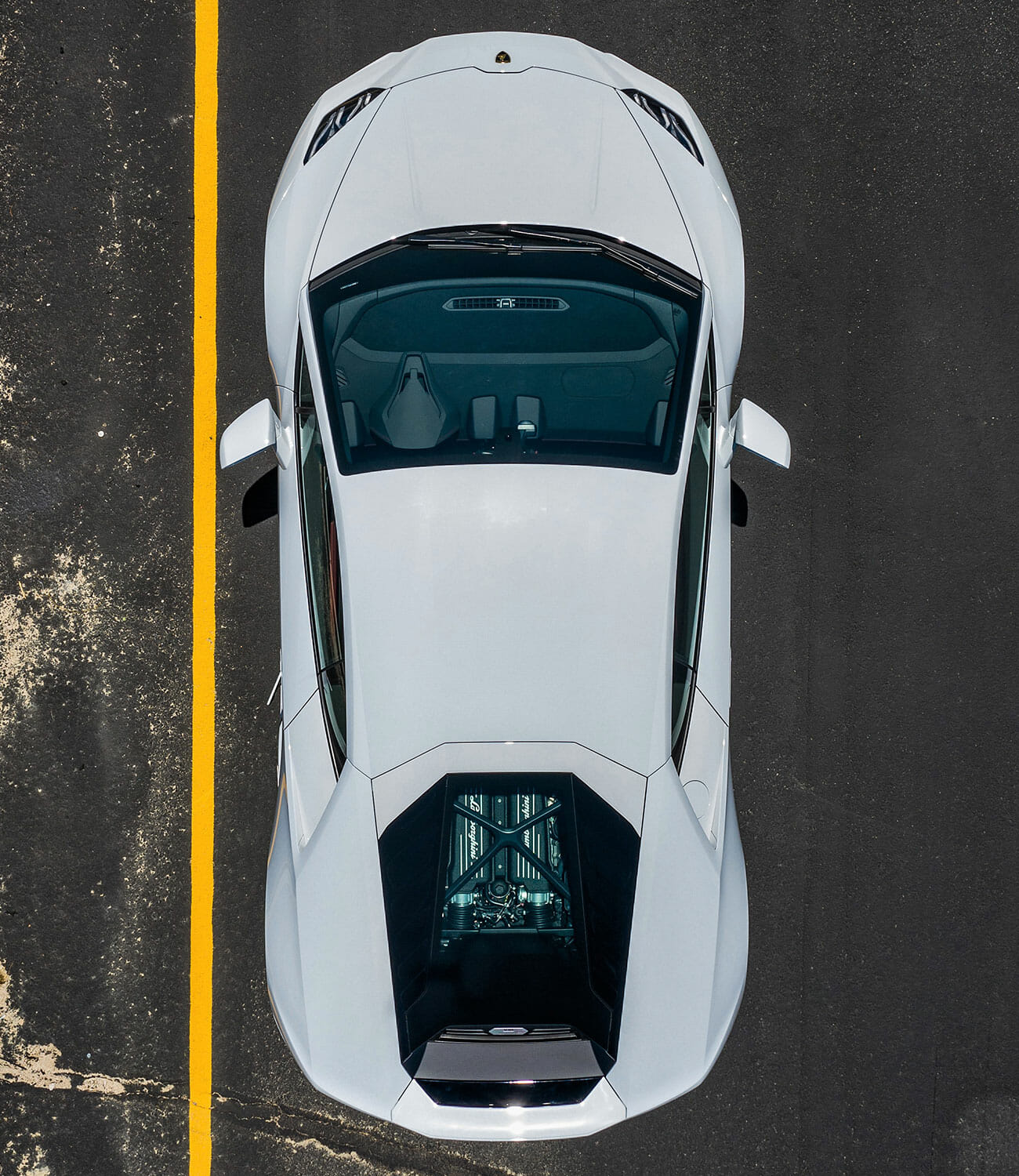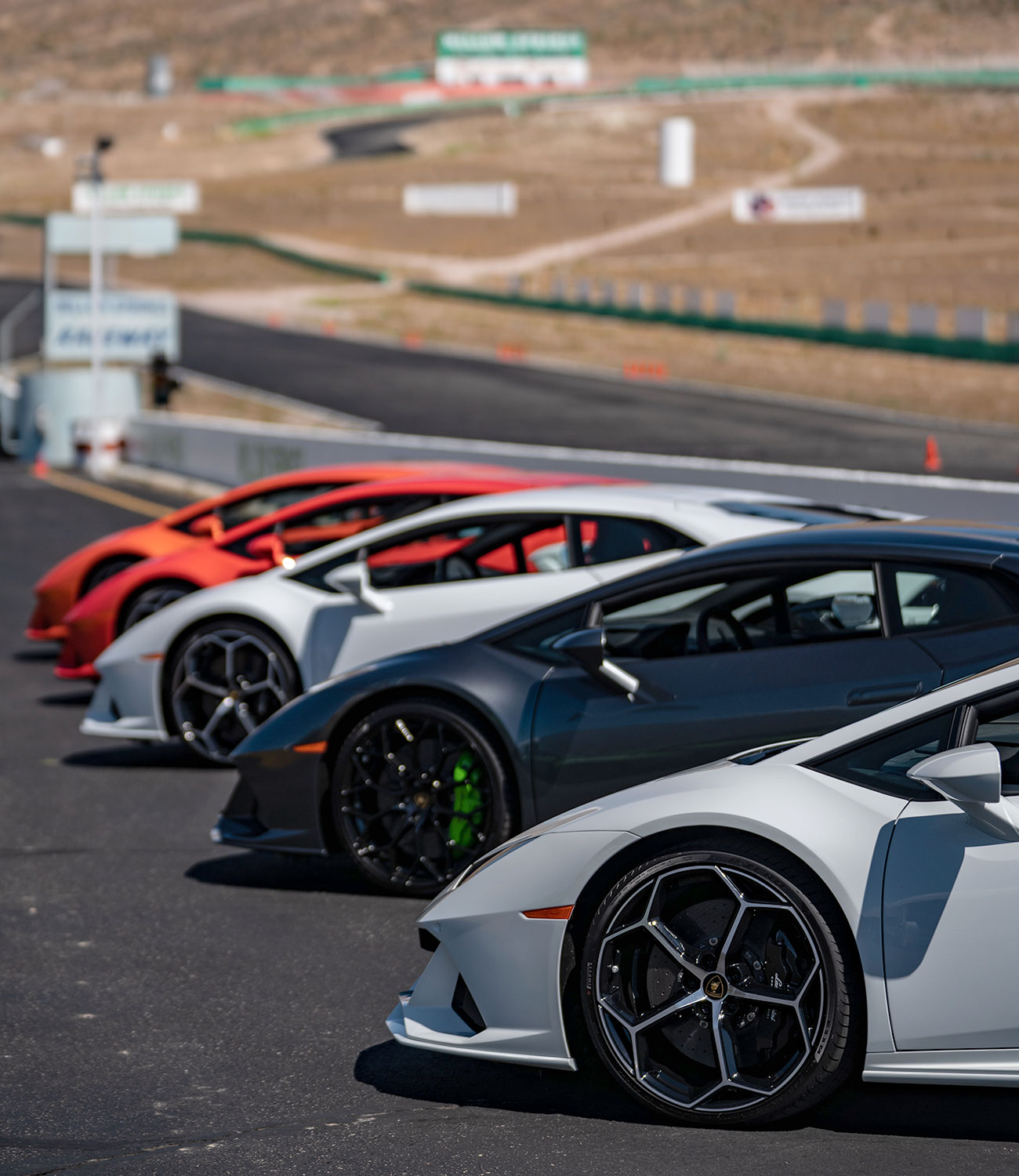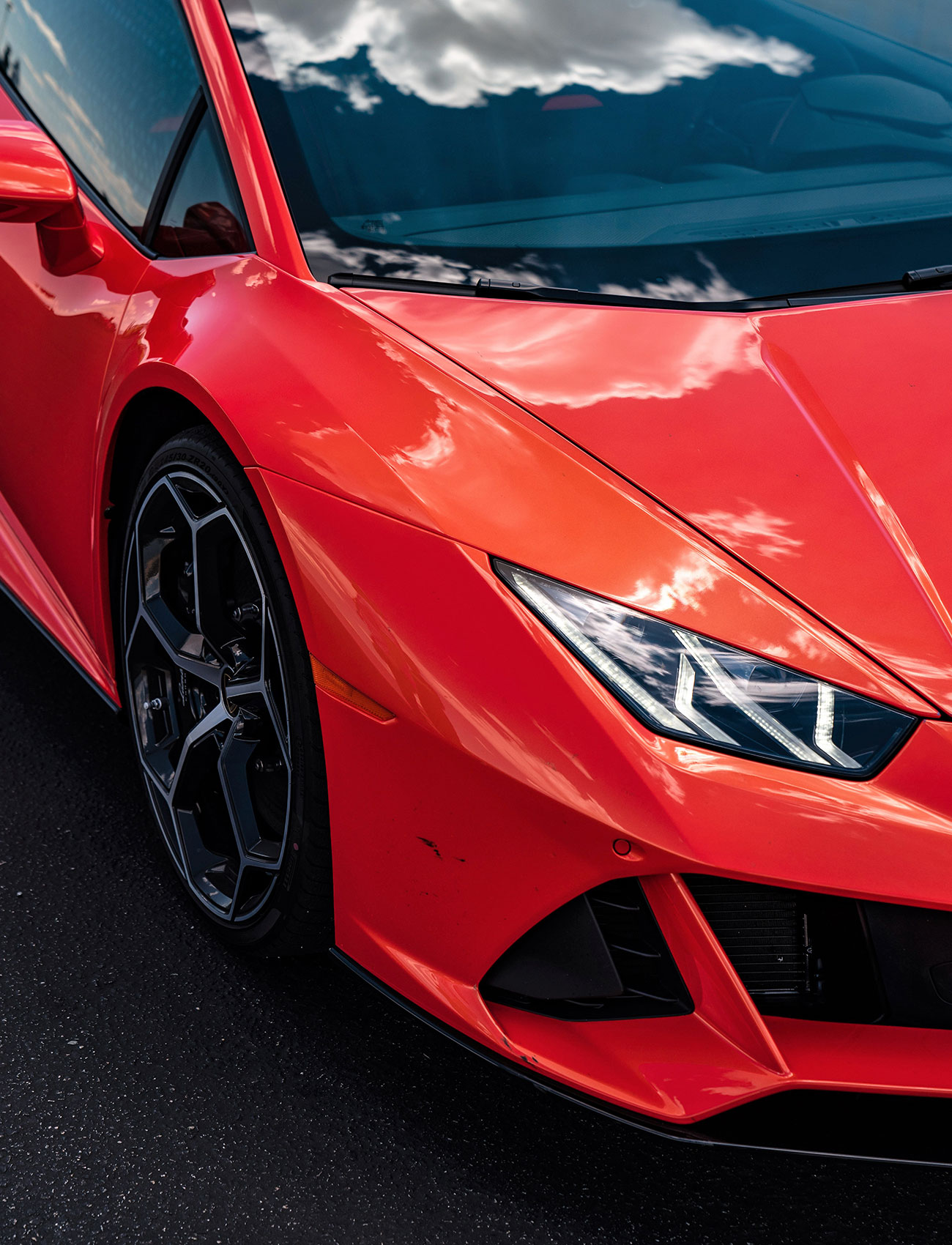Lamborghini has gifted the world a new Huracán, and it’s way smarter than the other supercars. The new Huracán Evo jacks up the aerodynamics and power, yes — but its real magic trick is the introduction of a new centralized computer that replaces the multitude of separate units for each vehicle system found in the previous model. The result is a car that works to anticipate what the driver is about to do, whether on the track or the street, creating a harmonious man/machine interface.
The Good: Well, it’s a Huracán, so the starting point is already good. The mid-engined, two-seat supercar receives a power bump to 640 horsepower and 442 pound-feet of torque, some revised aerodynamics to enhance grip and stability at speed, and four-wheel-steering to carve through turns more precisely. Meanwhile, the new Lamborghini Dinamica Veicolo Integrata (LDVI) computer consolidates all the dynamic inputs and sensor data and metes out instructions for the car’s systems by the millisecond.
TL;DR: It’s fast, so you can go faster.
Who It’s For: Anyone with an affinity for the highest-tech enhancements to the driving experience. This is not an analog machine; it’s got a computerized dual-clutch transmission, the aforementioned digital central nervous system, and enough processing power on board to send Apollo 11 to the moon and back a million times over. In short, it’s a tech-nerd’s supercar fantasy.

Watch Out For: The system does require a bit of mental adaptation. As the car works to anticipate your moves, it can behave somewhat squirrely until your brain syncs up with what its brain is doing. (This is particularly true of the four-wheel-steering.) You have to get to know each other. This is true with any car, of course, but the Evo brings a lot of new things to the table, so it takes a few laps to get your head around it all.
Alternatives: In this universe, the competition is rare. There’s the Ferrari 488 GTB, of course — another mid-engine supercar, but with a twin-turbo 3.9-liter V8 instead of the naturally aspirated V10 in the Lamborghini. There’s also the McLaren 720S, which clocks in with even more extreme performance stats than the Ferrari.
Review: When reviewing cars like the Lamborghini Huracán Evo at a track like Willow Springs International Raceway, where journalists tried it out, you kind of have to think fast. Not because of the speeds you’re attacking the turns in — though that’s part of it — but to the brevity of the experience as a whole. Every second counts, and you need to compress your learnings into what invariably ends up being just a few hot laps.

This Huracán, with its newly-rewired digital control technology, makes that process simultaneously easy and impossible. Easy because the differences between this car and its conventional predecessors tend to stand out in relief — the four-wheel-steering, the anticipatory aligning of car and corner — but also impossible because there’s so much more to explore than in most cars.
That’s all due to the LDVI system. In short, the thinking is this: Most cars collect dynamic data from dozens of sensors and systems (brakes, suspension, engine, steering, etc.), and they all respond to one another. Lamborghini’s engineers have turned that thinking on its head. Instead of multiple computers taking input from other computers and commanding their own systems, all the data in the Huracán — supplemented by three accelerometers and three gyroscopes tucked into the car at its precise center of gravity — goes straight to a single computer, which commands all the other systems in harmony. If a regular car’s computers are jazz musicians riffing off one another, LDVI is a maestro conducting an orchestra.
All that means the Evo can analyze the road, the vehicle’s position and the driver’s movements — including the speed and intensity of those movements—and make an educated guess about what’s coming next and set up the car for each coming challenge, requiring the driver to make fewer corrective inputs.
At Willow, that proved the recipe for an exhilarating drive. The Huracán smoothed out turns brilliantly — at least, once I figured out what it was up to and stopped trying to fight it. While the computer was doing its thing (every 20 milliseconds, it should be noted), I also had the benefit of the new rear-wheel-steering system, which can pivot the back in sync with the front at higher speeds and opposite at lower ones.

Aerodynamically, there’s a new front splitter with an integrated wing and a newly redesigned rear spoiler, both conspiring to ratchet up the downforce. The car is more slippery, too, thanks to improved airflow through the front vents and past the wheels and a rear diffuser to even further clean up the air and enhance adhesion.
The full package makes the Evo far more than a mere refresh; these are serious upgrades to the Huracán. They’re also absolutely worth the price of entry. Once I’d completed my laps at Willow, now fully aware of how much the car is able to prime itself for each millisecond of drive time, I pulled into the pit and thought, for the first time, Yeah, this car gets me.
Verdict: Once you wriggle through a few introductory laps and learn the machine’s modus operandi, the Lamborghini Huracán Evo is fantastic. There’s no other car on the road that has made this profound a leap — both conceptual and practical — in vehicle dynamic control theory. In a few years, all cars will use this centralized strategy, and everything else will feel laughably archaic.
2020 Lamborghini Huracán Evo Key Specs
Powertrain: 5.2-liter V10, seven-speed dual-clutch automatic transmission, all-wheel-drive
Horsepower: 631
Torque: 443 pound-feet
0-62 MPH: 2.9 seconds
Top Speed: 202 mph
Lamborghini hosted us and provided this product for review.

Hot takes and in-depth reviews on noteworthy, relevant and interesting products. Read the Story

